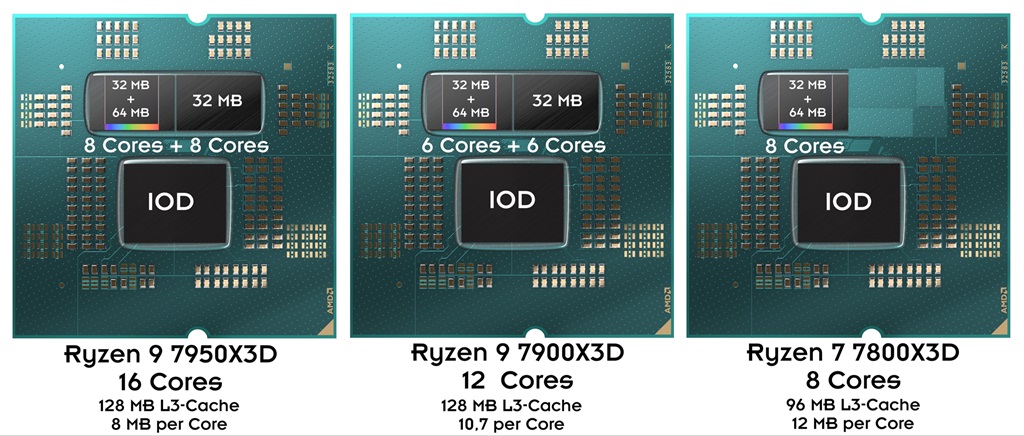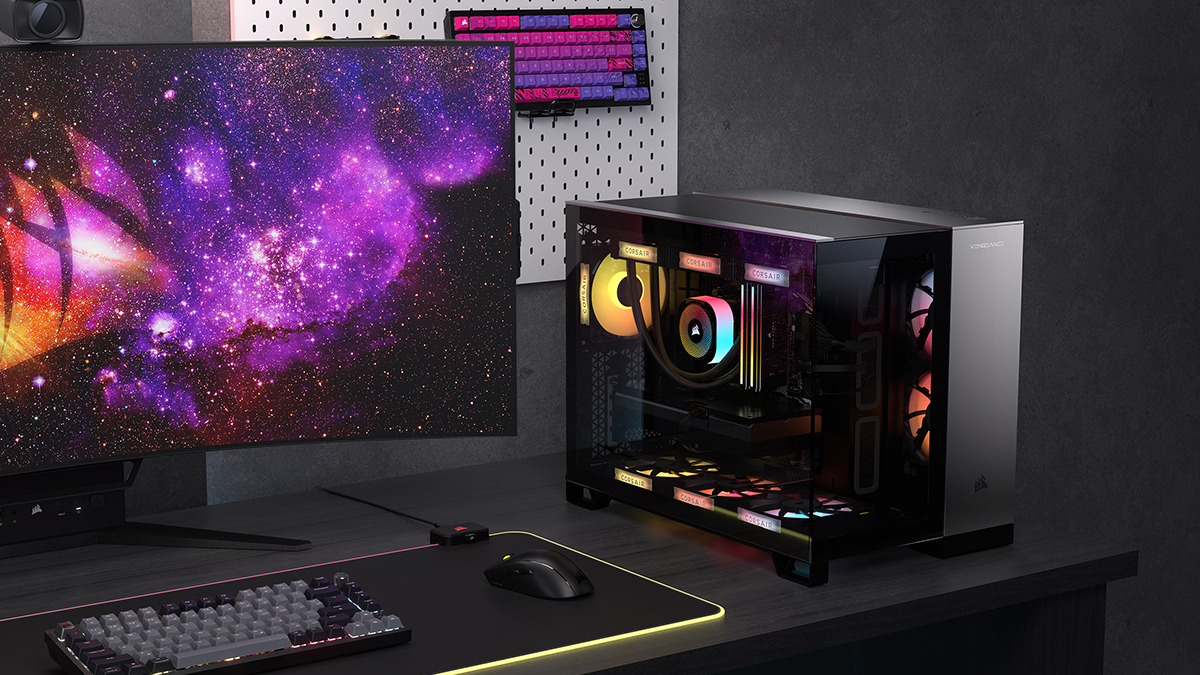- The Ryzen 9 7900X3D sits at an awkward place in AMD’s lineup price-wise.
- Windows 10 Pro, along with Windows 11, isn’t optimised to utilise the dual CCD design properly.
- The AMD Ryzen 9 7800X3D offers much better value for money in 2024.
AMD’s ‘X3D’ lineup of gaming CPUs are renowned worldwide for being some of the best in the industry, starting with the Ryzen 7 5800X3D that first launched in April 2022.
They work by stacking L3 Cache on a ‘chipset’ to double, triple, or even quadruple the amount of the L3 Cache that’s usually directly proportional to real-world gaming performance.
But that nifty hack hasn’t really paid off with the Ryzen 9 7900X3D, a CPU that sits at the second highest seat in AMD’s current generation of Ryzen 7000 ‘X3D’ Series Processors.
Don’t worry, I’m here to explain why.
Ryzen 9 7900X3D: The Pro Or The Problem?
Let’s get right down to it. The Ryzen 9 7900X3D sports the second generation of AMD’s championed 3D V-Cache architecture in the form of coupled CCDs (Core Chiplet Dies), splitting the astounding 128 MB of L3 Cache in a 96 MB + 32 MB format.
AMD even went on to fix one of the biggest misgivings with its first CPU that debuted with 3D V-Cache, i.e., the Ryzen 7 5800X3D with its significantly slower clock speeds ranging from 3.4 GHz to a maximum of 4.5 GHz.
The AMD Ryzen 9 7900X3D fixes that shortfall by boosting Base and Turbo Clock Frequencies for the Zen 4 ‘Raphael’ processor’s Performance Cores to 4.4 GHz and 5.6 GHz at a rated TDP (Thermal Design Power) of 120W.
The Ryzen 9 7900X3D can even be found for a discounted price of $470 nowadays, but I still don’t recommend the Ryzen 9 7900X3D for gaming, and I never plan on doing so in the near future. Why so?
Less Is More
What is the difference between the first and second generations of AMD’s proprietary 3D V-Cache architecture? Good question. The older ‘X3D’ CPUs utilized a singular CCD to stack those ridiculous amounts of L3 Cache to help with respect to gaming performance, specifically speaking.

However, the Ryzen 9 7900X3D (and even the Ryzen 9 7950X3D) attempt to transcend this mechanism to the next level by stacking on another 32 MB of L3 Cache for a total of 128 MB within a dual CCD mechanism as explained above, in sharp contrast to all other ‘X3D’ CPUs from the ‘Vermeer’ Ryzen 7 5800X3D to the current-generation Ryzen 7 7800X3D running with 96 MB of L3 Cache.
In theory, that sounds like an awesome idea. But why am I constantly insisting that it won’t automatically translate to increased performance in terms of real-world gaming scenarios?
Ryzen 9 7900X3D vs. Windows
Windows 10 Pro (yes, some people still remain adamant on sticking with Windows 10 Pro, akin to the Windows 7 era) as well as Windows 11 Pro isn’t properly programmed to take full advantage of the dual chipset design algorithm.
Long story short, Windows isn’t able to run or ‘schedule’ gaming-related processes on both the CCDs simultaneously, so it ends up using the CCD with 96 MB of L3 Cache while scheduling other background processes towards the 32 MB CCD.
The extra four cores in the Ryzen 9 7900X3D also don’t help, as Windows isn’t really designed to take advantage of multiple CPU cores in such a manner.
As such, the Ryzen 7 7800X3D with 8x cores manages to hold its own, and then some are against the 7900X3D as single-core performance still reigns supreme as far as Windows 10 and 11 are concerned.
Ryzen 9 7900X3D: The Final Nail In The Coffin
Let’s talk about money.
![The AMD Ryzen 9 7900X3D faces stiff competition from no other than its own 'X3D' siblings in the current generation's lineup. [Image Credits - AMD]](https://tech4gamers.com/wp-content/uploads/2024/04/AMD-Ryzen-9-7900X3D-Pricing-1024x576.jpg)
As such, I find it incredibly difficult to reasonably recommend the Ryzen 9 7900X3D to anyone for an additional $85, approximately speaking. I’d rather you spend that extra bit of dough on more RAM/faster memory, bigger and better SSDs, or hell, even a faster GPU, albeit $85 isn’t probably going to do you a lot of good in that department.
Bottom Line
But here we are. The bottom line? The Ryzen 9 7900X3D sucks big time and AMD has no one to blame but itself for selling the Ryzen 7 7800X3D, widely acclaimed as the Best Gaming CPU in 2024 as far as the value for money proposition is concerned, for $385. Oh, but AMD? That’s a compliment; at least you got one CPU right.
Thank you! Please share your positive feedback. 🔋
How could we improve this post? Please Help us. 😔
[Editor-in-Chief]
Sajjad Hussain is the Founder and Editor-in-Chief of Tech4Gamers.com. Apart from the Tech and Gaming scene, Sajjad is a Seasonal banker who has delivered multi-million dollar projects as an IT Project Manager and works as a freelancer to provide professional services to corporate giants and emerging startups in the IT space.
Majored in Computer Science
13+ years of Experience as a PC Hardware Reviewer.
8+ years of Experience as an IT Project Manager in the Corporate Sector.
Certified in Google IT Support Specialization.
Admin of PPG, the largest local Community of gamers with 130k+ members.
Sajjad is a passionate and knowledgeable individual with many skills and experience in the tech industry and the gaming community. He is committed to providing honest, in-depth product reviews and analysis and building and maintaining a strong gaming community.


 Threads
Threads

